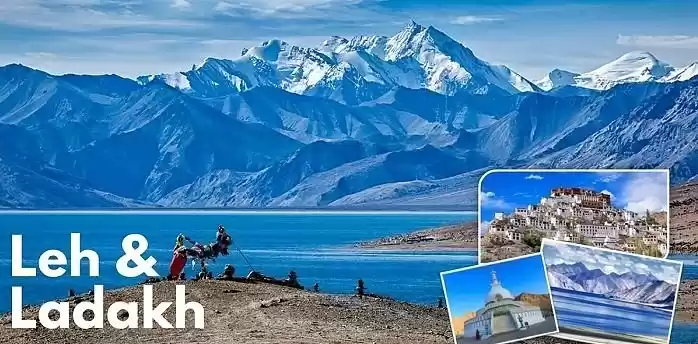
The Tabo Monastery is situated in Tabo Village in the Spiti Valley. The Tabo Chos-Khor Monastery was set up over a thousand years back, in 996 A.D., the Year of the Fire Ape by the Tibetan Calendar.
Tabo Monastery lies on the fruitless, snow secured, chilly desert of the Tabo Valley at high height of 3050 m. Solid by any cutting edge curses, it is a paradise in its very own sense. It has safeguarded the eminent legacy, conventions and culture of Buddhism through the entry of hundreds of years, retaining its sacredness.
The Tabo Gompa, in the whole Himalayan locale, is second in significance just to the Tholing Gompa in Tibet. The King of western Himalayan Kingdom of Guge, Lotsawa Rinchen Tsang Po built up the cloister as a propelled community for learning. For a huge period, numerous incredible researchers and interpreters in the Buddhist history thinks about were facilitated here. Till date, Tabo Monastery is known as the preserver of the Buddhist Legacy. Regardless it stays a standout amongst the most critical Gompa of the whole Tibetan Buddhist world.
The Tabo cloister sanctuaries saves a precious accumulation of compositions and thangkas (Buddhist parchment sketches), excellent statues in stuccos, frescos and wall paintings showing stories from the Mahayana Buddhist Pantheon. Every last bit of divider is canvassed with fine compositions in all around safeguarded condition.
Tabo Monastery is additionally given the sobriquet of the "Ajanta of the Himalayas". Hints of shake artworks and figures are uncovered. The sanctuary complex is a noteworthy fortune of India, secured by the Archeological Survey of India. 36 nearly life-measure mud statues embellish the dividers of the get together lobby. Over the devout enclave are a progression of caverns which were utilized as abiding units by the priests.
The cloister complex holds 9 sanctuaries, 23 chortens, a priest's chamber and an expansion that houses the nuns' chamber.
The Nine Temples are:
The Temple of the Enlightened Gods (gTug-Lha-khang)
This sanctuary has a focal figure is the four-overlay figure of Vairocana. In Vajrayana Buddhism, he is viewed as one of the five otherworldly children of Adibuddha-who was oneself made natural Buddha. An overwhelming symbol around two meters over the floor is portrayed in a stance turning the wheel of law. Excellent Kashmiri canvases of Buddha's life effortlessness the insides.
The Golden Temple (gSer-khang)
When layered with gold, this sanctuary was comprehensively remodeled in the sixteenth century by Senge Namgyal, leader of Ladakh. The dividers and roofs are secured with exceptional wall paintings.
The Mystic Mandala Temple (dKyil-kHor-khang)
This sanctuary likewise passes by the name of Initiation Temple as the commencement to monkhood happens here. A tremendous painting of Vairocana encompassed by eight Bodhisattvasare venerated.
The Bodhisattva Maitreya Temple (Byams-Pa Chen-po Lha-khang)
A picture Bodhisattva Maitreya that is more than six meters high commands the sanctuary. The excellent presentation of paintings worshiping the internal dividers portrays the religious community of Tashi-Chunpo and Lhasa's Potala royal residence.
The Temple of Dromton (Brom-ston Lha khang)
Established by Dromton (1008-1064 AD), a critical devotee of Atisha, it is one of the soonest sanctuaries of Tabo. Multifaceted carvings and wall paintings enhances each surface of the sanctuary.
The Chamber of Picture Treasures (Z'al-mama)
A sort of a bet room connected to the Enlightened Gods sanctuary, The Chamber of Picture Treasures is secured with wonderful works of art of the Tibetan style.
The Large Temple of Dromton (Brom-ston Lha khang)
The second biggest sanctuary in the unpredictable, covering more than 70 sq m, has the figure of Sakyamuni flanked by Sariputra and Maha Maugdalayana. The external dividers portray the adored eight Medicine Buddhas and Guardian Kings.
The Mahakala Vajra Bhairava Temple (Gon-khang)
Devoted to the defensive god of the Galuk-dad faction, savage divinities fill the room. The sanctuary additionally passes by the name of 'sanctuary of frightfulness' and must be entered after defensive contemplation.
The White Temple (dKar -abyum Lha-Khang)
Lovely paintings and canvases beautify the dividers of the sanctuary. An elaborate low dado is raised for the priests or nuns to incline toward while intervening.
Since the establishing of Tabo Monastery, very little has changed. The lamas still perform tantric customs in the sanctuaries. Reciting begins at 6 a.m. sharp. Numerous celebrations are held in the environs of the religious community. The Tibetan priests perform customary Buddhist tunes and covered moves.
A voyage through Spiti Valley stays inadequate on the off chance that you have not investigated the Tabo Monastery.





























